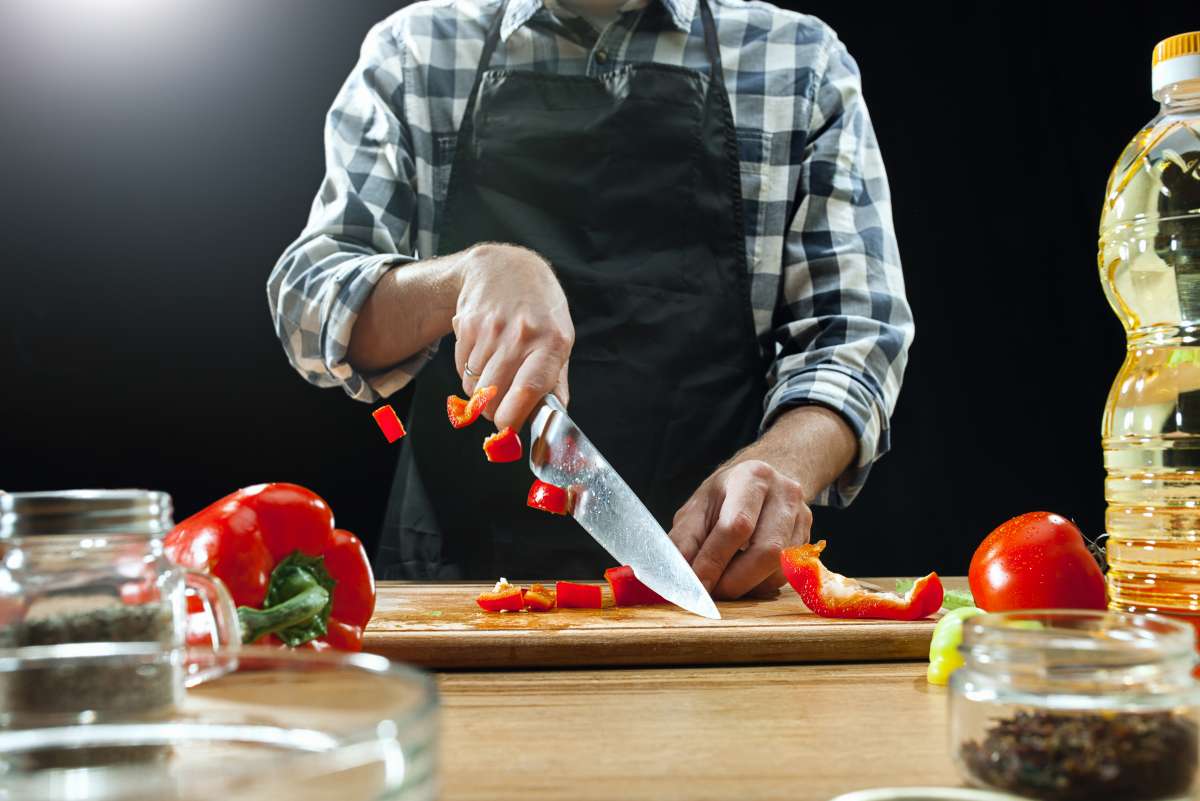5 secrets on how professional chefs chop the way that they do
The ability to chop like a pro is all about speed, precision and expertise. Here are some of our top tips to help you improve your knife skills
There's a reason why chopping is often the first cooking technique you learn. Whether you're dicing, slicing, or just chopping up that onion, a good chef knows that well-executed knife skills are crucial for any cook's arsenal.
Cutting vegetables, meats, and fruits to make a great dish takes special skill. We are not saying you need to win the MasterChef cook-off championship — although that would be great! But if you want to get all of your ingredients cooked evenly and correctly, it is best to know how to cut like a professional.
1. Prepare your knife
Hold your knife by the handle and lightly rap the back of the blade on a cutting board or countertop. This should knock out any dust or food particles that might have collected on the blade. Then, use a sharpening steel to hone the blade before you start chopping produce. Sharp knives are safer to use than blunt ones.
2. Hold your knife properly
There is only one right way to hold a knife: with your middle finger wrapped around the butt of the handle and your index finger resting lightly on top of the blade near its base.
3. Cut uniform pieces
Cutting uniform pieces takes practice to get perfect, but cooking is all about practice anyway! Make sure that you're using a consistent motion. Fingers back! To chop safely and efficiently, keep your fingers tucked in so that your knuckles are showing – this way, it's almost impossible for them to be anywhere near the blade!
4. Use the appropriate cutting board
For the best stability and control, use a wooden cutting board or one made of hard plastic that has non-slip grips on its base. Glass, marble or granite boards can make the blade slip when chopping, which increases your chances of cutting yourself.
5. Use the right type of knife
Using the right blade for the job will make you cut more efficiently and safely. A paring knife is used for small tasks such as peeling or coring an apple. Until you get comfortable with a chef's knife, use it for chopping onions (and other veggies). A serrated bread knife cuts through loaves of bread and cakes easily. Professionals tend to stick with a few staples, each designed to tackle specific tasks in the kitchen.
Do you know any other tips that can help how to chop quickly and efficiently? Let us know in the comments section below!

